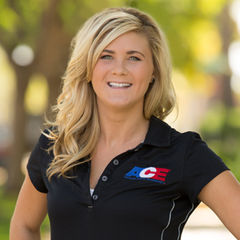As health and fitness professionals, it’s our responsibility to help guide our friends, family and clients in the direction of healthful eating, and we are often asked to create diet plans. While we might be capable of creating a healthful meal plan that works for us, there is no real way to know for sure that what we believe to be healthy is really going to meet every individual’s needs. Furthermore, it is outside a fitness professional’s scope of practice to create meal plans—only registered dietitians are qualified to make specific meal plans for individuals.
Now, we aren’t telling you all this to scare you off from giving nutritional advice. Rather, the objective of this blog is to help you understand how to provide nutrition education that is within your scope of practice as a fitness professional.
The difference comes down to nutrition planning (outside scope of practice) vs. nutrition coaching (within scope of practice). If you’ve ever played a sport, think about your coach. He or she didn’t tell you exactly what to do and when, right? Rather your coach gave you skills, drills and strategies so that you could come up with the right solution to whatever you faced in the game. Yes, sometimes your coach might have pulled you aside and said I want you to do X, Y and Z in this particular situation, but you still had to use your own skills and abilities to execute that move or play. Nutrition coaching is the same thing—you’re equipping your clients with the skills they need to feel confident about cooking and eating healthy, whether at home or on-the-go. Meal planning, on the other hand, requires you to tell your clients everything that they should eat and when, which only really helps your clients as long as they have you around. If they move, go on vacation or have a work luncheon, for example, they won’t have the knowledge to know how to make healthful decisions.
Consider this often-heard saying, “Give a man a fish, and he eats for a day. Teach a man to fish and he eats for a lifetime.” Nutrition planning is just giving clients the fish. They aren’t learning anything from the experience. Nutrition coaching, however, teaches clients how to fish and gives them the ability to make healthful decisions for a lifetime.
Here are some great tools you can use to better equip your clients to make healthy nutritional choices:
Review the USDA Dietary Guidelines for Americans
Making clients aware of what the general recommended guidelines are, helping them learn how to read a food label, and equipping them with the very basics of caloric balance can help them understand what foods they should be eating more of and which ones should be decreased or avoided all together.
While many people don’t completely agree with these guidelines (which were just revised for 2015-2020), they offer a good starting point for meeting the nutritional needs of most adults and making improvements to the typical American diet.
Finally, while there might be some diets that you think are better (you may even follow one yourself), unless you’re a dietitian you don’t know if that diet is appropriate for your client. Encourage your clients to always research any diet they might considering following; it may even be a good idea to discuss it with a physician or registered dietitian, if possible.
Help Your Clients Learn Healthy Cooking and Preparation Techniques
Food preparation is half the battle. Depending on the preparation, a pizza or even a salad, for example, could either be incredibly healthy or a total junk food. Help your clients learn to prepare food healthfully using different cooking techniques, herbs, spices, oils, etc. You can also help them identify ways to make their favorite recipes healthier so they don’t feel like they have to give up their favorite foods.
Discuss Healthy Eating On-the-go
Teach your clients how to look at a menu while eating out, and equip them with the knowledge and skills to find a healthy option. This can be accomplished by making additions (e.g., a side of steamed veggies) or substitutions (e.g., a side salad or fruit instead of French fries). You can also teach them about portion distortion so they can know when to stop eating. Give your clients strategies to use while eating out (putting half the meal in a to-go box before they start eating, for example) to help them stick to their healthy eating goals, even when the temptation to indulge is high.
Busy schedules mean many people are constantly eating on the go. For these clients, it’s crucial that you help them learn how to prepare food ahead of time or how to put together quick and healthy meals on the fly. Teach clients how to dedicate one night per week to preparing food for the whole week, which helps alleviate the stress on those nights where they’re just too tired to cook. Show clients how to make a few large meals that can be frozen and reheated at a later date (which can be scheduled on the calendar so they don’t forget about them).
Review Clients’ Food Journals or Food Frequency Questionnaires
Keeping a food journal or filling out a food frequency questionnaire can be tedious for clients, but these tools provide valuable insight into what a person’s typical diet looks like. It also can help you identify areas for improvement, such as reducing portion sizes or making minor substitutions and/or additions. Each tool has its pros and cons, so make sure you’re aware of those so that you can select a method that is going to best serve the needs of your clients. Finally, it can be really intimidating for clients to write down and reveal to you everything they eat, so make sure you cultivate a safe environment and practice empathy with your client so they know there is no judgment.
Take Clients to the Grocery Store
Have your clients create their own grocery list and then help them identify the healthiest versions of the foods on that list. For example, if a client is making a pasta dish, help her locate some healthier versions of pasta (e.g., whole-wheat, brown rice or quinoa pastas), educate her on what to look for in pasta sauces (e.g., no added sugar), and maybe suggest some fruits or veggies that might complement the meal. In the end, the client is choosing what she will purchase, but you have given her some ideas and tools to make healthy choices.
These are just some of the ways that you can help your clients make improvements to their diet. Always be sure to respect your scope of practice, avoid pushing your own nutritional beliefs, and help each clients find his or her own healthy, sustainable diet. In other words, teach your clients to fish so that they can eat healthy for a lifetime.




 by
by 









